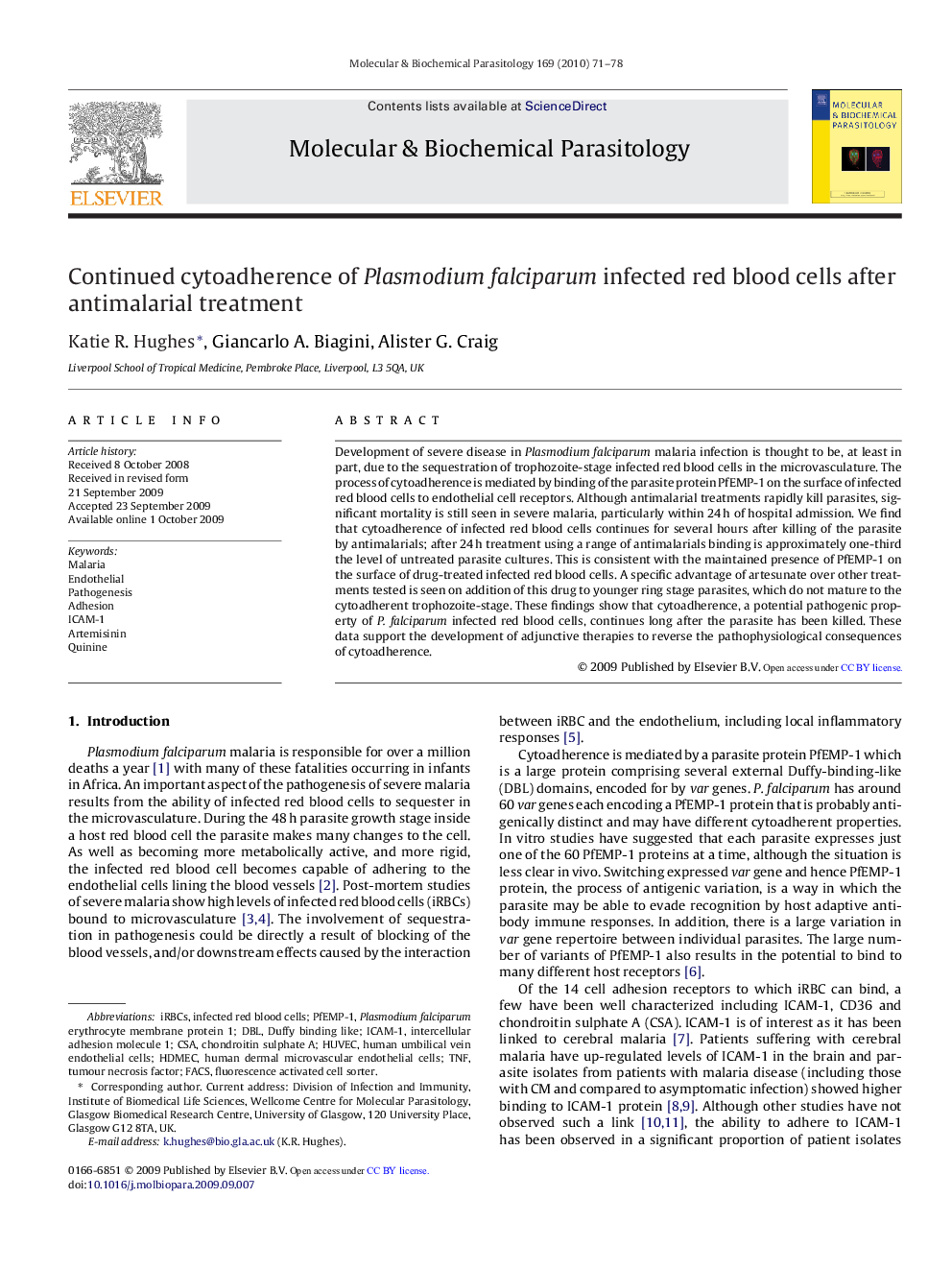| کد مقاله | کد نشریه | سال انتشار | مقاله انگلیسی | نسخه تمام متن |
|---|---|---|---|---|
| 5915887 | 1163338 | 2010 | 8 صفحه PDF | دانلود رایگان |

Development of severe disease in Plasmodium falciparum malaria infection is thought to be, at least in part, due to the sequestration of trophozoite-stage infected red blood cells in the microvasculature. The process of cytoadherence is mediated by binding of the parasite protein PfEMP-1 on the surface of infected red blood cells to endothelial cell receptors. Although antimalarial treatments rapidly kill parasites, significant mortality is still seen in severe malaria, particularly within 24Â h of hospital admission. We find that cytoadherence of infected red blood cells continues for several hours after killing of the parasite by antimalarials; after 24Â h treatment using a range of antimalarials binding is approximately one-third the level of untreated parasite cultures. This is consistent with the maintained presence of PfEMP-1 on the surface of drug-treated infected red blood cells. A specific advantage of artesunate over other treatments tested is seen on addition of this drug to younger ring stage parasites, which do not mature to the cytoadherent trophozoite-stage. These findings show that cytoadherence, a potential pathogenic property of P. falciparum infected red blood cells, continues long after the parasite has been killed. These data support the development of adjunctive therapies to reverse the pathophysiological consequences of cytoadherence.
Journal: Molecular and Biochemical Parasitology - Volume 169, Issue 2, February 2010, Pages 71-78